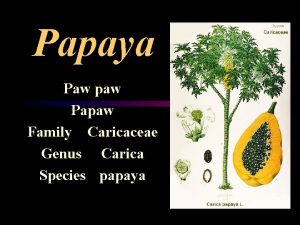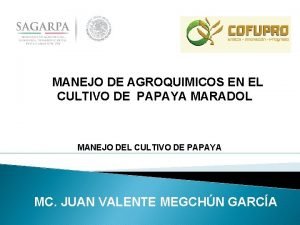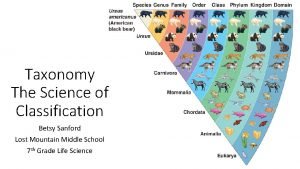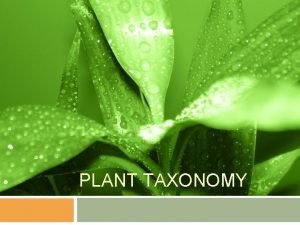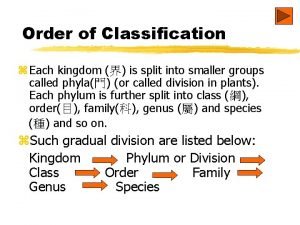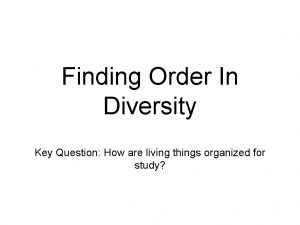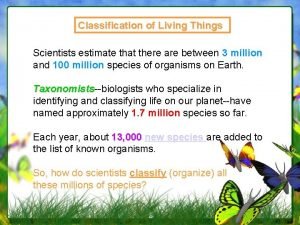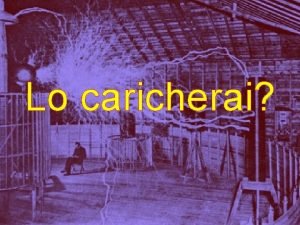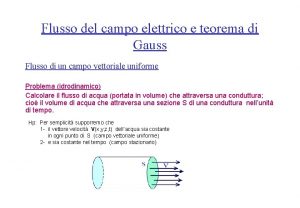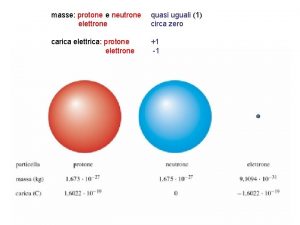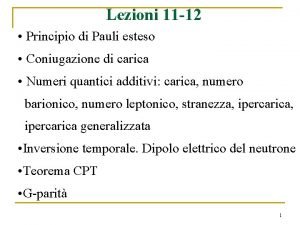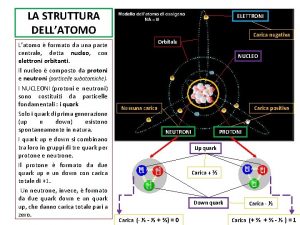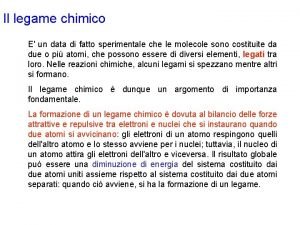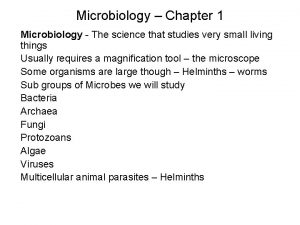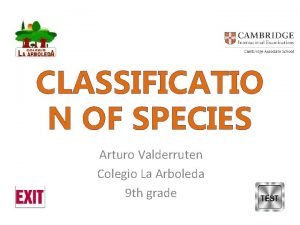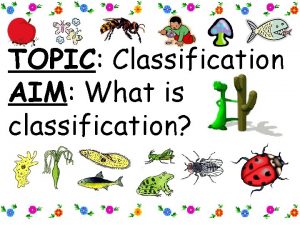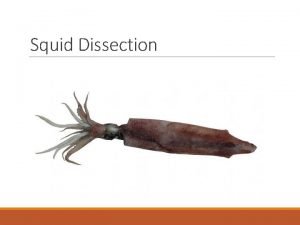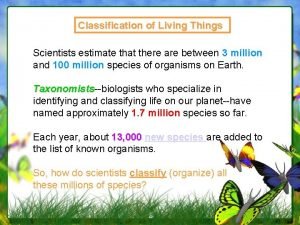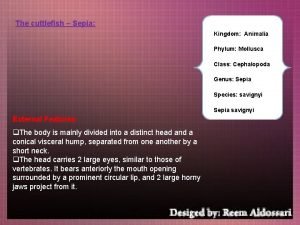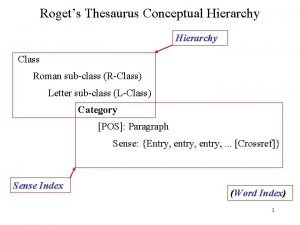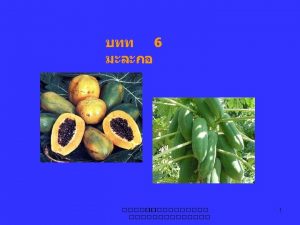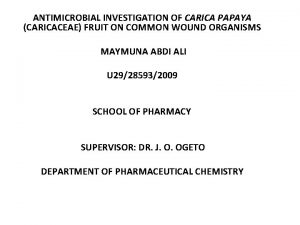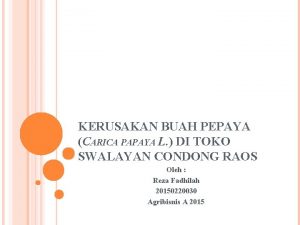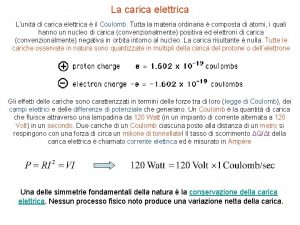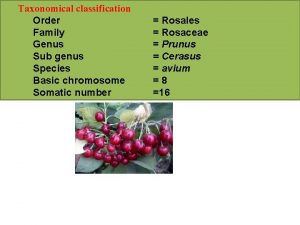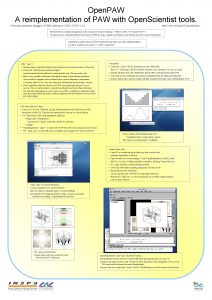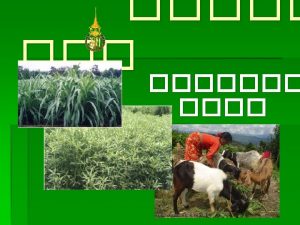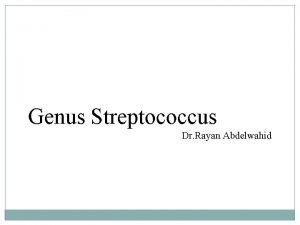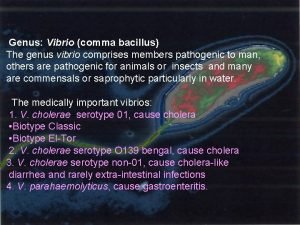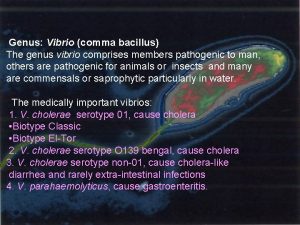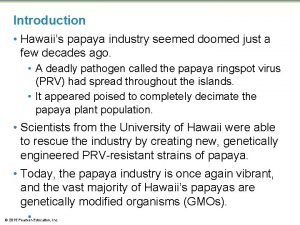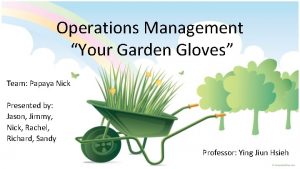Papaya Paw paw Papaw Family Caricaceae Genus Carica
























































- Slides: 56

Papaya Paw paw Papaw Family Caricaceae Genus Carica Species papaya

Papaya Readings (On web page) • Nishina et al. , 2000. – Papaya Production in Hawaii. – CTAHR, F&N-3. • Manshardt, 1999. – ‘UH Rainbow’ Papaya. A High-Quality Hybrid with Genetically Engineered Disease Resistance. – CTAHR, NPH-1 • Kempler and Kabaluk. 1996. – Babaco (Carica pentagona Heilb. ): A possible crop for the greenhouse. – Hort. Science 31: 785 -788. Tropical Horticulture - Texas A&M University

- Tall - Herbaceous - Short-lived - Large leaves - Flower in leaf axils - Seed propagated Tropical Horticulture - Texas A&M University

- Up to 10 lb. - Seed in cavity - Yellow, orange, pink, or red flesh - High vitamin A & C, and potassium Tropical Horticulture - Texas A&M University

Proteolytic enzyme extracted from latex - Meat tenderizer - Cosmetics - Leather industry - Medicinal uses Tropical Horticulture - Texas A&M University

Carica • 20 species • papaya – Lowland cultivated spp – Not found outside cultivation – Perhaps hybrid form – Only polygamous spp – Most important commercially Tropical Horticulture - Texas A&M University

Other Cultivated Carica • Highland species – Common in upland Valleys of Ecuador and Colombia – Taste different, less sweet – Soups, stews, sweets, fresh – Genes for breeding (cold/disease resistance) Tropical Horticulture - Texas A&M University

Other cultivated Carica • Hybrid types - Babaco – Most commercially advanced – Seedless - parthenocarpic – Large fruit – Fresh or stewed – Vegetatively propagated Tropical Horticulture - Texas A&M University

Origin of Papaya Domesticated somewhere between southern Mexico and Guatemala Cultivated papaya Taken into Asia tropics in the 1600 s Carica spp Tropical Horticulture - Texas A&M University In Pacific Islands by 1800

Origin of Carica papaya • Tropical America – Southern Mexico – West Indies • Other spp: Mexico - Argentina • Spread via seed – 1600 s in Asian tropics – By 1800 common in Pacific Tropical Horticulture - Texas A&M University

Papaya Production in the World Three-fold increase since 1965 FAOSTAT database, 1965 - 2000 Tropical Horticulture - Texas A&M University

3 fold increase Two-fold+ increase Five-fold increase Three-fold increase Tropical Horticulture - Texas A&M University

Papaya per Capita Production in the World FAOSTAT database, 1965 -2000 Tropical Horticulture - Texas A&M University

World Production of Papaya FAOSTAT database, 2000 -2002 Tropical Horticulture - Texas A&M University

World Production of Papaya FAOSTAT database, 2000 -2002 Tropical Horticulture - Texas A&M University

World Yields of Papaya FAOSTAT database, 2000 -2002 Tropical Horticulture - Texas A&M University

• Most in Hawaii USA Production ì Produce 23, 000 MT ì Most exported to mainland USA, Canada, and Japan ì Production decrease since 1989 due to Papaya ringspot Tropical Horticulture - Texas A&M University

Fruiting of the Papaya • • Fruit hang along trunk Flower in leaf axils – Most are dioecious – Some are hermaphroditic or perfect flowered – Five classes of flowers Tropical Horticulture - Texas A&M University

Type I or Pistillate Flower or female flower Tropical Horticulture - Texas A&M University

Female Papaya Flower Tropical Horticulture - Texas A&M University

Type II or Pentandria Flower Tropical Horticulture - Texas A&M University

Type III or Intermediate Flower Tropical Horticulture - Texas A&M University

Type IV or Hermaphroditic Flower or bisexual or perfect flower Tropical Horticulture - Texas A&M University

Hermaphroditic Papaya Flower Tropical Horticulture - Texas A&M University

Type V or Staminate Flower or male flower Tropical Horticulture - Texas A&M University

Male Papaya Flower Tropical Horticulture - Texas A&M University

Importance of Sex • Female – Fruit is an enlarged ovary • Male – Need pollen for pollination • Flower type influences – Thickness of flesh – Fruit shape Tropical Horticulture - Texas A&M University

Inheritance of Sex • One locus, three alleles – M 1 male – M 2 hermaphrodite or bisexual – m female • Homozygous dominant lethal – M 1 M 1, M 1 M 2 and M 2 M 2 lethal – M 1 m = male M 2 m = bisexual – mm = female Tropical Horticulture - Texas A&M University

Seedlings segregate for sex l Need to maximize the number of productive plants ÔHermaphroditic varieties maximize hermaphrodites ÔDioecious type maximize females • Plant multiple seedlings per space and rogue wrong sex Tropical Horticulture - Texas A&M University

- 2/3 hermaphroditic and 1/3 female Tropical Horticulture - Texas A&M University

Maximize Bearing Plants Hermphroditic variety • Want hermaphroditic plants • Rogue out females Ô 1 per space = 67% Ô 2 per space = 89% Ô 3 per space = 96% Tropical Horticulture - Texas A&M University

Female or Dioecious Types • Need one male for every 12 -15 females – 6 -8% males • Fruit is better if good pollination – Pollination by wind and moths Tropical Horticulture - Texas A&M University

- 1/2 female and 1/2 male Tropical Horticulture - Texas A&M University

Maximize Bearing Plants Dioecious variety • Maximize females • Rogue out males Ô 1 per space = 50% Ô 2 per space = 75% Ô 3 per space = 87. 5% Ô 4 per space = 93. 7% Tropical Horticulture - Texas A&M University

Sex Can Change! • Too cool, wet, and high N Ô Female Ô Stamens become carpel like • Too hot, dry, and low N Ô Male Ô Ovaries fail to develop Tropical Horticulture - Texas A&M University

Climatic Restrictions • Optimal temperature 22 - 26 C 4 4 4 Sex expression shifts Flavor poor if cool Die if less than -1 C Die if greater than 44 C Long growing season • Susceptible to wind damage Tropical Horticulture - Texas A&M University

Cultural Restrictions • Need direct sunlight – Poor flavor if shaded • Well drained soils – Sensitive to waterlogging – Susceptible to Phytophthora • Sensitive to saline conditions Tropical Horticulture - Texas A&M University

Diseases of Papaya • Papaya ringspot virus èMost important èLimiting factor in many areas of world • • Mildew Anthracnose Root rot, Phytophthora (replant sites) Nematodes Tropical Horticulture - Texas A&M University

Papaya Ringspot Virus • Vectored by aphids – Leaf mottling and distortion – Reduce growth, yield • So severe in Florida that plants are grown as annuals Tropical Horticulture - Texas A&M University

Papaya Ringspot Virus Tropical Horticulture - Texas A&M University

Papaya Ringspot Virus Control via resistant varieties • UH Sunup and UH Rainbow – GMOs (Genetically Modified Organism) Tropical Horticulture - Texas A&M University

Insect Pests • • • Fruit flies Webworms White flies Thrips Mites Fruit spotting bugs Tropical Horticulture - Texas A&M University

Fruit flies Lay eggs in fruit Larva feed in fruit Cause rot Heat treat to kill in fruit Tropical Horticulture - Texas A&M University

Papaya Varieties Two Major Types • Hawaiian - Solo types õHermaphroditic õSmaller fruit, about 1 lb • Mexican or “fruta bomba” õDioecious õLarger fruit, up to 10 lbs Tropical Horticulture - Texas A&M University

Hawaiian Varieties Hermaphroditic Solo types • Common in US markets – Fruit small, firm, sweet – Plant smaller ~ 8’ – Sex expression more stable • Series of inbred seed lines developed in Hawaii – Most widely grown is “Sunrise” variety Tropical Horticulture - Texas A&M University

Mexican Varieties • Locally available in many tropical regions • Much larger fruit • Flavor generally less intense • Frequently dioecious • Not as good for shipping Tropical Horticulture - Texas A&M University

Establishment • Propagated by seed v. Clean off gelatinous coat v. Dry and plant immediately v. Warm (80 F), sterile soil v. Germinate in 2 weeks v. In 10 weeks ready to transplant Tropical Horticulture - Texas A&M University

Site Selection • “Virgin soil” preferred • Replant sites – High levels of Phytophthera palmivora – “Virgin soil” technique – Fungicide drench in planting hole – Fallow of 3 -5 years Tropical Horticulture - Texas A&M University

Planting • Spacing èSingle row, 8’ x 10’ Õ (435 plants per acre) èDouble row, 6’ x 12’ Õ(850 plants per acre) • Multiple seedlings per space to maximize bearing plants – 3 to 5 plants per hole until flowering Tropical Horticulture - Texas A&M University

Cropping Cycle • From planting begin to fruit in 10 -12 months – Begins to flower in 4 -8 months – Fruit develops in 4 -6 months – Possible to grow as annual • Commercially can fruit for 3 -4 years Tropical Horticulture - Texas A&M University

Production Practices • No pruning • High nitrogen to encourage growth • May thin fruit to one per cluster to avoid crowding Tropical Horticulture - Texas A&M University

Harvesting and Yields • Climacteric fruit – Harvest yellow green – Dark green fruit will not ripen • Potential yield – 100 tons/ha or 40 tons/acre • Average yield – 15 -25 tons/ha or 6 -10 tons/acre Tropical Horticulture - Texas A&M University

World Yields of Papaya FAOSTAT database, 2000 -2002 Tropical Horticulture - Texas A&M University

Post Harvest • Storage – 1 -3 weeks @ 7 -10 C • Fruit fly infestation treatment – Hot water: 20 minutes @ 120 F – Hot air: heat fruit flesh to 117 F Tropical Horticulture - Texas A&M University

International Markets • Major exporting countries – Mexico to USA and Canada – Brazil to Europe – India to Middle East – Many others Tropical Horticulture - Texas A&M University

Any Questions about Papaya? Tropical Horticulture - Texas A&M University
 Paw paw strips in water
Paw paw strips in water Inside out and back again papaya tree poem
Inside out and back again papaya tree poem The papaya that spoke
The papaya that spoke Scientific classification of papaya
Scientific classification of papaya Lidavital
Lidavital Papaya
Papaya Shake the papaya down lyrics
Shake the papaya down lyrics Fibrobacteria
Fibrobacteria Kingdom order
Kingdom order Mnemonic for kingdom phylum
Mnemonic for kingdom phylum Order of classification
Order of classification 3 domain system of classification
3 domain system of classification Maize plant classification
Maize plant classification Domain kingdom phylum
Domain kingdom phylum Finding order in diversity
Finding order in diversity Kingdom genus species family class order
Kingdom genus species family class order Kingdom family genus species
Kingdom family genus species Carica protone
Carica protone Carica elettrone
Carica elettrone Distribuzione continua di carica
Distribuzione continua di carica Severini ballerina blu
Severini ballerina blu Particella elettrica carica negativamente
Particella elettrica carica negativamente Caricaprotone
Caricaprotone Gabbia di faraday
Gabbia di faraday Energia campo elettrico
Energia campo elettrico Potenziale elettrostatico
Potenziale elettrostatico Distribuzione lineare infinita di carica
Distribuzione lineare infinita di carica Campo elettrico sfera isolante
Campo elettrico sfera isolante Peso molecolare
Peso molecolare Coniugazione di carica
Coniugazione di carica In un circuito rc un condensatore si carica all'80
In un circuito rc un condensatore si carica all'80 Polarizzazione degli isolanti zanichelli
Polarizzazione degli isolanti zanichelli Carica formale
Carica formale Carica elettrone
Carica elettrone La struttura dell'atomo mappa concettuale
La struttura dell'atomo mappa concettuale Simbologia di lewis
Simbologia di lewis Massa protone in kg
Massa protone in kg R femoralis n genitofemoralis
R femoralis n genitofemoralis A genus is subdivided into smaller groups called
A genus is subdivided into smaller groups called Taxonomy groups
Taxonomy groups Taxonomy of a polar bear
Taxonomy of a polar bear Is scientific name italicized
Is scientific name italicized Cor cordis declinazione
Cor cordis declinazione Wolf life cycle
Wolf life cycle Cetacea canidae panacea ursidae primates
Cetacea canidae panacea ursidae primates Igitur iis genus aetas eloquentia
Igitur iis genus aetas eloquentia Giornata della terra maestra giulia
Giornata della terra maestra giulia Squid anatomy labeled
Squid anatomy labeled Genus and species examples
Genus and species examples Art genus
Art genus Astropecten relitaris
Astropecten relitaris Hiatus tendineus adductorius
Hiatus tendineus adductorius Fca genus
Fca genus Genu dextrum
Genu dextrum Rr cutanei
Rr cutanei F
F Banana
Banana



